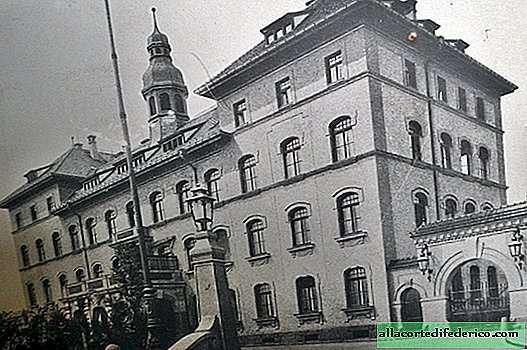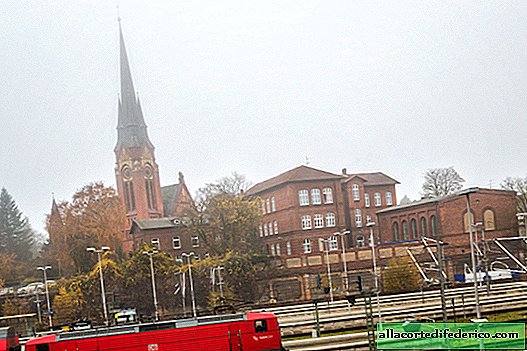The story of an abandoned psychiatric hospital in Leipzig

This may seem to some to be completely absurd, but the impressions of what I saw became one of the most vivid and unusual of my many travels around the world.

I don’t think that you have heard anything about the abandoned mental hospital in Leipzig before, so first I’ll tell you a little about this very unusual local attraction. This place today is called Park-Krankenhaus or Hospital Park. It is located on the outskirts of the city in the Dösen district.
In 1900, then still in the middle of fields and forests, a luxurious hospital was built here in the then fashionable pavilion style. At that time, the rapidly gaining popularity of psychiatry was dominated by the ideas of humane treatment with a green environment. Either hospitals or sanatoriums were built in large areas in the form of huge parks with separate buildings, where each doctor could work with his patients individually, not particularly distracted by the outside world.

Surprisingly, the Crankenhaus in Desen for almost a hundred-odd years practically did not change its appearance, layout and architectural features. He did not change his purpose. Mentally unhealthy people have always been treated and continue to be treated here, and although most of the buildings have been abandoned by people for more than 20 years, St. George's Clinic has been equipped on a separate part of it.

Nowadays, in this place, under the careful supervision of the so-called forensic psychiatry, and simply put, a half-prison, half-hospital for criminals recognized as insane.

Unfortunately, a luxurious, though neglected, landscape park with many interesting buildings from the beginning of the last century can hardly be called a paradise. Over the past hundred years, many terrible things have happened here.
One of the most famous patients in this hospital was judge and writer Daniel Paul Schreber. Already in adulthood, he began to have bouts of paranoid schizophrenia, which he described in detail while he could, in his diaries, later published as a separate book. His obsession was that he was really a woman. Soon the disease completely took control of the unfortunate, and he died in Desen in 1911.
Surprisingly, what is now called transgenderism then caused a serious illness. Moreover, the methods of treating such mental disorders were not humane. The very book of the poor judge has become a training tool for many psychiatrists in the world.
Later, the Institute of Psychology was located in Desen, led by the talented Dr. Herman Paul Nitsche. The famous luminary of science was a passionate supporter of eugenics, then fashionable - the science of human selection.
Under his leadership, in Desen began to carry out operations to sterilize seriously ill patients. Mortality after such surgery was high, especially among women.
But the German professor did not stop there and, under the order of the Nazis who came to power, led by Hitler, personally developed the Luminal barbiturate preparation for the notorious T-4 killing program.
The aforementioned professor of psychiatry himself ended his life on the guillotine, while not admitting his guilt in court. Until his death, he was firmly convinced that he served for the good of all mankind.

After the war, the hospital in Desen became an exemplary psychiatric hospital in the GDR. The main emphasis in treatment, as befits a socialist state, was placed on occupational therapy.
By the way, I think these photos I publish online for the first time. I saw them just in one of the corridors of the main building of an abandoned hospital in Desen.


In 1997, the hospital was transferred to new buildings somewhere in a completely different area of Leipzig, and the treatment method for the green environment was finally recognized as obsolete. Interest on 70 of the same complex is completely abandoned.
When we all found ourselves together on the territory of an abandoned psychiatric hospital, we first admired the unusual architecture of buildings for us. Take a look at some unusual balconies here.

Many buildings have already begun to merge with the environment.

Post-apocalyptic notes were added and walled up here and there doors with strange inscriptions.

Naturally, we could not resist and climbed into several buildings long abandoned by people. This happened approximately as shown below in the photo.

The first on our way was a large building with a chapel on the roof. Once there was a hospital church located in the Soviet years, turned into something like a club.

So it looked about 70 years ago.

This building has preserved the greatness of its past, despite piles of broken glass and traces of desolation. A completely different picture appeared before us in the former department of surgery.
This building was equipped with an elevator attached to the side in Soviet times, and it has become practically a cult among the informal youth of Leipzig.
A three-story building can terrify even people with a strong psyche. Wide open doors of the chambers, some scattered wires, broken beds on wheels, and most importantly, a huge number of threatening graffiti on the walls.

All this is a real kingdom of surrealism from some parallel world.


We experienced completely opposite feelings when we entered the main building of the hospital, where its administration and VIP chambers were once located for special clients.

It seems that this building continued to remain under guard for a long time and only recently became available to illegal explorers of urban spaces. Its safety is amazing.
This is the entrance hall with massive columns.

And so - the amazingly beautiful stairs with luxurious wooden details.

But even greater surprise awaited us in the basement of the building. With pedantic accuracy, all the things that could still be in demand in the future were torn down here and neatly laid out. For example, parts of street lamps.

Here stood an ancient copy machine and a large unit, similar to a press.

All main communications were carefully disconnected, but not uprooted. Motors, manometers, cranes - everything was in place and in working condition.

So far, vandals and graffiti lovers have not reached this part of the psychiatric hospital. For the first time I was in an abandonment of such safety. And in general, the whole complex made a powerful impression on me.

Such objects are rare in Europe and even more so - for the countries of the former USSR. It’s not a fact that now you can also easily penetrate the most secluded corners, but this place will certainly attract lovers of creepy stories and horror films.

















